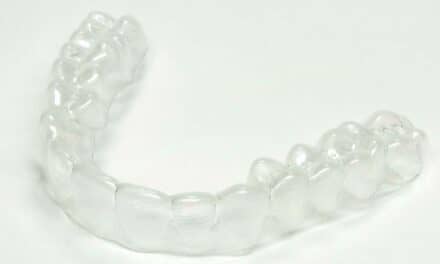by Nona Naghavi, DDS, and Laurance Jerrold, DDS, JD
What would you include in an outcomes-assessment form for practitioners and patients?

Nona Naghavi, DDS

Laurance Jerrold, DDS, JD
Essentially, there are three factors that govern the motivation for undergoing orthodontic treatment: objective signs (a frank malocclusion recognized by the patient or an oral health care practitioner); 2) subjective symptoms (problems such as food impaction, aesthetic concerns, and speech impediments); and 3) soft-tissue concerns (such as retrusive or protrusive jaws or lips and gummy smiles).1
When orthodontists treat these problems, what outcomes assessment mechanisms exist for them to determine if an improvement or correction has been made? And what mechanisms exist for patients to evaluate whether or not they received a benefit for their health care dollars spent?
Historically, only certain clinical findings, measured by the orthodontist, have been included in these assessment indices such as the ABO DI, PAR, ICON, and IOTN. While these may provide the orthodontist with the ability to measure certain therapeutic changes, patients often have separate interests in the outcome of treatment that may not necessarily coincide with ours. If we are happy with the end result but our patients are not, we have not provided a service to the public.
As a general rule, orthodontists have had little regard for what they cannot directly and objectively measure or experience with their senses.2 Bell et al3 demonstrated that self-perception of profile is the most important point in patients’ decisions to undergo orthognathic surgery and is a major determinate in ascertaining patient satisfaction. An individual’s facial image is not solely associated with cephalometric measurement changes4 but is often a response to the patient’s perception of themselves as a whole.5
It has been postulated that subjective evaluation by patients is the most important measure of success in orthodontic treatment.6 If this is true, then the main goal of orthodontic therapy should be to satisfy patients by addressing their chief complaint. If this is true, then why not include this type of component in an orthodontic outcomes-assessment tool?
Gottlieb7,8 declared, “In a private practice, the need for orthodontic treatment is not determined by a scale regarding the severity of malocclusion. It is determined by the need of the individual who owns the malocclusion. Patients derive great satisfaction from having had orthodontic treatment, and even minor corrections can contribute greatly to an individual’s self esteem, success, and happiness. Most assuredly, patients don’t consult an index quantifying the severity of their malocclusion to help them decide on whether or not to accept treatment.”7
In addition, he notes that “the basic problem with trying to find the one best way to treat every condition is in the assumption that there is only one best way. The best outcome might not even be an optimum result due to physical, physiological, anatomic, mental, and psychological limitations.” 8
On a different note, stability at the end of orthodontic treatment is directly related to homeostasis achieved between hard and soft tissues, as well as any functional and environmental influences both at rest and during function. Since it is the soft tissue that determines the degree of therapeutic modifiability,9 initiating orthodontic therapy without soft-tissue and/or aesthetic considerations results in decision-making that may be incomplete.
Jacksonville University is in the process of evaluating what components should be included in an outcomes-assessment tool. We are seeking the opinions of rank-and-file orthodontic practitioners concerning what criteria they think are important. Comments from orthodontists in academia and/or private practice are welcome. What we seek is input into the following two areas.
If you were charged with developing an outcomes-assessment tool for orthodontic treatment, what criteria would you consider important in determining whether or not a patient has achieved a meaningful improvement? We plan on designing a simple form that uses no more than 10 clinical criteria. What we hope to find are commonalities that most clinicians can agree upon.
Secondly, what criteria would you suggest be included in the section of the tool that patients complete in order to evaluate what degree of improvement they believe they received? Is it that orthodontic therapy improved their smile? Is it that their ability to eat, chew, or speak has been enhanced? Is it how their facial appearance has changed?
We earnestly believe that developing an outcomes-assessment tool designed by orthodontists in the field is going to be important in years to come. We are hoping the orthodontic community at large will take part in developing its own future. Please take a few minutes, think about this issue, and send us your responses.
Thank you.
Nona Naghavi, DDS is a first-year resident at the Jacksonville University School of Orthodontics. She can be reached at
Laurance Jerrold, DDS, JD is the dean and program director at the Jacksonville University School of Orthodontics.
References
- Prahl-Andersen B, Boersma H, van der Linden FPGM, et al. Perceptions of dentofacial morphology by laypersons, general dentists, and orthodontists. Am Dent Assoc. 1979;98:209-212.
- Giddon DB. Orthodontic applications of psychological and perceptual studies of facial esthetics. Seminars in Orthodontics. 1995;1(2):82-93.
- Bell R, Kiyak HA, Joondeph DR, et al. Perceptions of facial profile and their influence on the decision to undergo orthognathic surgery. Am J Orthod. 1985;88:323-332.
- Maxwell R, Kiyak HA. Dentofacial appearance: A comparison of patient self-assessment techniques. Int J Adult Orthod. 1991;6z:123-131.
- Miner RM, Anderson NK, Evans CA, et al. The perception of children’s computer-imaged facial profiles by patients, mothers and clinicians. Angle Orthod. 2007;77(6):1034-1039.
- Jacobson A. Psychological aspects of dentofacial esthetics and orthognathic surgery. Angle Orthod. 1984;54(1):18-35.
- Gottlieb EL. The editor’s corner. J Clin Orthod. 1979; 13(10):639-667.
- Gottlieb EL. The editor’s corner. J Clin Orthod. 1995;29(3):133-145.
- Ackerman JL, Proffit WR. Soft tissue limitations in orthodontics: Treatment planning guidelines. Angle Orthod. 1997;67(5):327-336.





